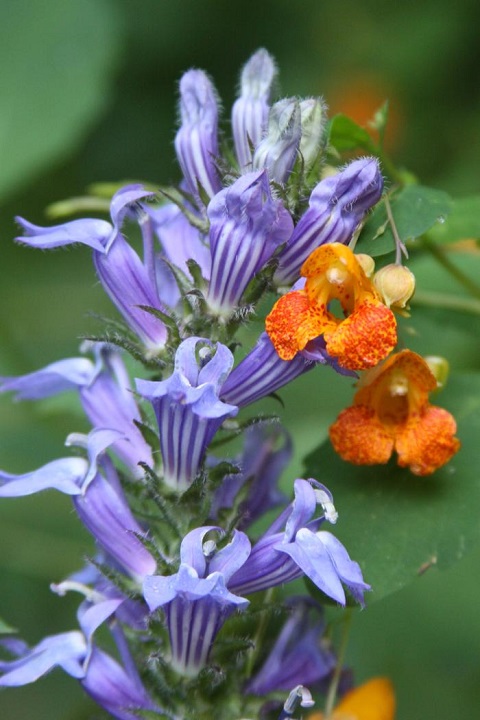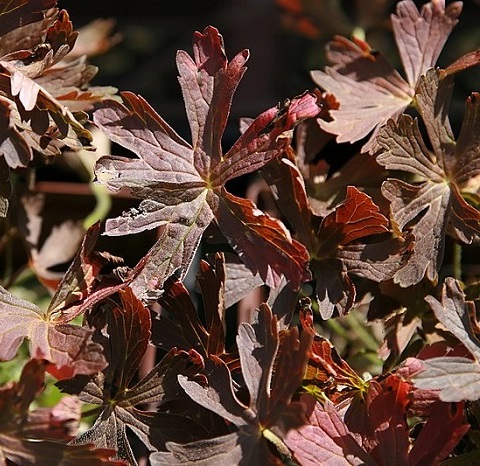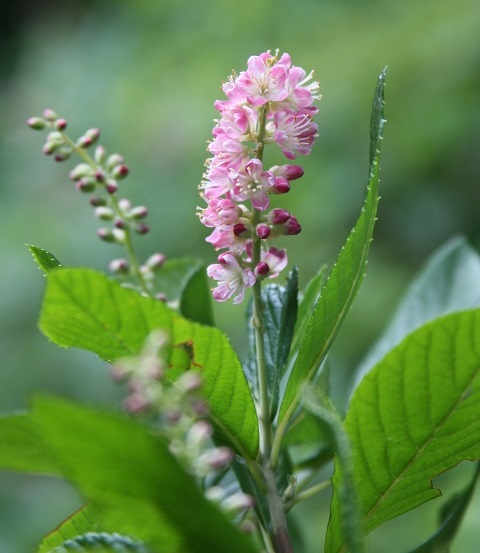Important Definitions
Contents:
Pollinator Powerhouse Plants
Ecoregions
Cultivars
Selections
Species, subspecies, varieties and forms
Why do we list and sell cultivars?
Pollinator Powerhouse Plants
One of our search criteria is the "Pollinator Powerhouse Plant" characteristic. Pollinator powerhouse plants are species that serve as host plants to a proportionally large quantity of butterfly and moth species (lepidopterans). All plants produce chemical compounds that are toxic to some insects, but over evolutionary timescales, most plant-eating insects have evolved alongside specific plant lineages, developing the ability to digest those plant tissues without coming to harm. 90% of plant-eating insects are specialists to some degree, meaning that they can only eat and digest the leaves, stems, and/or seeds of one or just a few plant lineages. If those lineages disappear, so do the insects. Because insects are an invaluable source of protein that songbirds rely on to lay eggs, feed their young, and maintain population sizes, the number of insect species supported by a given plant lineage is an important indicator of that lineage's importance to the ecosystem.
Though insects of all kinds have evolved alongside native plants and all contribute to the food chain, caterpillars in particular are slow-moving, stay on their host plants for a long time, and are fairly easy for scientists to collect, identify, and count. Because of this, the relative number of caterpillar species supported by plants in a given lineage (genus or family) is used as a proxy for that plant's value in supporting plant-eating insects overall, which in turn is used as a proxy for the plant's ecological value. "Pollinator Powerhouse Plant" is a designation for native plant species that support a proportionally large number of caterpillar species: woody plants qualify as pollinator powerhouses if they support 75 or more species of lepidopterans; herbacious plant species qualify if they support 15 or more species of lepidopterans. These thresholds are meant to help gardeners select plants that will be especially effective in supporting local ecosystems.
The data used to determine whether the plants in our database qualify as Pollinator Powerhouses comes from research by the US Forest Service and by Dr. Doug Tallamy of the University of Delaware, with results located on the National Wildlife Federation's Native Plants Finder Database, where you can search to find the number of lepidopteran species hosted by a given genus or species in your region, or where you can find out which plants host which lepidopterans.
Ecoregions
The Ecoregion search criterion refers to the EPA Level 3 Ecoregions, geographic areas determined by common geography, climate, and plant communities. New England includes five ecoregions, which are each named, color coded, and numbered. All but one of the New England ecoregions extend beyond the state boundaries of the region. We offer the option to narrow down your search to plant species that have been found to occur naturally in one or more of the New England ecoregions.
We want to encourage consideration of garden plant species within a broader ecosystem context, especially since plant community distributions are not determined by political or state boundaries. Individual gardeners can contribute to maintaining biological diversity and overall habitat quality by selecting genetically diverse, seed-grown native plants that have adapted to the local soil conditions, climate, and biological communities in New England. Moreover, knowing whether a plant is native to a given ecoregion can confer insights into the climate and soil conditions needed for it to thrive.
Cultivars
A cultivar is a cultivated variety of a plant species that has been selectively bred by humans to satisfy an aesthetic preference, sometimes at the expense of ecologically important plant structures such as fertile flowers. Cultivars are propagated by various asexual means, including division and tissue culture. As such, all plants belonging to a given cultivar are genetically identical.
You can recognize that a plant is a cultivar by looking for a name placed in single quotes after the plant’s latin name, e.g.:
- Penstemon digitialis ‘Husker's Red’
- Phlox paniculata ‘Nikki’
We advocate for gardeners to plant wild-seed-grown, native species plants of local provenance whenever possible. Cultivars are often less ecologically functional than natural species because the aesthetic characteristics they were selected for may come at the cost of functional characteristics that help the plant function ecologically. For example, cultivars that produce more and larger flowers may have to redirect resources away from producing nectar and pollen. Cultivars may have characteristics that make them unrecognizable or unpalatable to pollinators and other insects: red-tinted leaves are more pleasing to the eye, but less recognizable to insect herbivores. Cultivars contribute no genetic diversity to the populations of species from which they were derived, and do not contribute to resilience within the landscape.
To be ecologically functional, plants must:
- Feed insects, which pollinate the vast majority of flowering plants (including crops) and in turn function as food for songbirds during critical stages of reproduction and development;
- Provide food and habitat for wildlife either as individual plants or in aggregate;
- Contribute to diversity among and within species, which helps plant populations and communities recover from disease and disturbance events.
Because there are countless cultivars, most have not been assessed for ecological functionality.
Selections
Selections are clones, like cultivars, but instead of arising from selective breeding in a captive setting, selections are clones of individual plants that were found growing in naturally-occurring wild populations. Selections are lumped in with cultivars in the horticulture and nursery industry: a selection will be given a common name in single quotes after the latin name, just like a cultivar. Nevertheless, we prefer selections to cultivars because they represent physical characteristics that evolved naturally in the wild, and which may therefore retain ecological functionality. It is worth noting that a selection from a plant population in the southern- or western-most portion of the species' range may not be hardy to local conditions in the eastern or northern portion of its range, so we give preference to selections from within populations near to or within New England.
Identifying Plant Categories: Species, subspecies, varieties and forms
Species, subspecies, varieties and forms are all designations for plants that arise from natural selection and exhibit broad genetic diversity. You can recognize that a plant is naturally occurring because of the binomial nomenclature used. It will have a two-part Latin name (Genus and specific epithet) written in italics, sometimes followed by an abbreviation: ssp. (for subspecies) var. (for variety) or f. (for form).
For example:
- Dicentra canadensis (species)
- Lupinus perennis ssp. perennis (subspecies)
- Cypripedium parviflorum var. parviflorum (variety)
- Actaea pachypoda f. rubrocarpa (form)
The concepts of subspecies, varieties, and forms may cause confusion. In the context of botany, the taxonomic designation of subspecies is used to distinguish between geographically isolated groups belonging to the same species. Variety is a taxonomic designation used to distinguish between two or more genetically distinct groups (within a species or subspecies) that display at least one consistently differing characteristic, but that are not separated geographically. Finally, form is a less formal designation that describes an individual or group of individuals within a population that differ from the others based on a salient physical characteristic, like flower color or leaf shape.
It is not necessary for gardeners to seek out one variety or form over another for the purpose of supplementing ecological functionality within the landscape, but some species have American and European subspecies, for instance; in these types of cases, the more local subspecies is preferable. Conservationists may seek to preserve a variety of a subspecies in a given location, but these distinctions are not pertinent to garden plantings.
Why do we list and sell cultivars?
We include cultivars in this database for several reasons: first, cultivars of native plants have been historically planted at Garden in the Woods, and we believe that, when compared to exotic or non-native plants, a cultivar of a native is likely to be more ecologically valuable than a plant that was never adapted to our region at all.
Our database includes selections that are hardy and provide good wildlife value, and we list cultivars that are present in the garden or that we know to be comparatively close to the "straight" species in terms of structure and appearance so that wildlife has a better chance of using and recognizing these plants as food sources. We include the cultivars we have because:
- They may be the only representatives of the species commercially available;
- They were bred for resistance to certain plant pathogens or better hardiness to drought or cold;
- They enable gardeners to make better use of limited space.
We advocate for gardeners to plant seed grown, native species plants of local provenance when possible. However, we recognize that gardens reflect individual priorities, and we respect the decision to plant what works best for each person.



